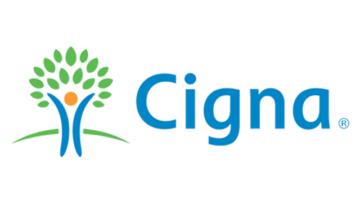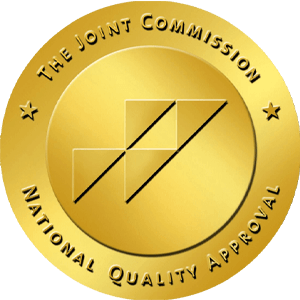Addiction to technology is a relatively new phenomenon, but it is one of the fastest growing addictions that we have ever seen. Today’s technology devices ensure that we never have to spend a moment fully immersed in reality should we choose it. Or in another perspective, we can choose to live in another reality whether real or not- there is always a screen to escape into. But what happens when the screen is turned off? Unavailable? Inaccessible? For those struggling with technology addiction overwhelming feelings of panic or doom, sweating, rapid breathing, and an uncontrollable sense of worry can take hold. Hence why the link between increased anxiety from technology addiction comes as no surprise to us then.
Technology Addiction is an umbrella term that includes addictive behavior towards video gaming, social media, texting, shopping platforms, gambling, cybersex and online porn, online auctioning such as eBay, as well the general overuse of smartphones. But why technology can have such an impact on our brain, emotions, behaviors, and most importantly our Identity is still being understood. Treatment for technology addiction goes far and beyond the use of screens and includes an unhealthy emotional connection to the internet.
How Technology Addiction Can Affect Our Brain
Internet addiction alters the volume of the brain, and interestingly enough these changes are similar to those produced by alcohol addiction and/or substance abuse. Technology addiction shrinks the brains gray and white matter fibers which results in changes to emotional processing and brain functioning. While technology addiction and neuroenhancement are particular effects of digital media and electronic devices.
In fact, a recent study by the National Institutes of Health showed that kids who spend more than two hours a day on screen time activities score lower on language and thinking tests. And kids who spend more than seven hours a day on screens show a thinning of the brain’s cortex, which manages critical thinking and reasoning. More common are the effects on our brain of multitasking, attention span, concentration, and the capacity of working memory. Which makes sense as processing multiple and continuous incoming streams of information is certainly a challenge for our brains.
The Science Of Our Brain And Increased Anxiety
But what about the link between increased anxiety from technology addiction- does this affect our brain even more? Yes. Anxiety is a natural response of the mind and body in survival. When you have a stress/anxiety response, three parts of your brain are involved. These three parts of the brain are the Brainstem, Limbic System, and Frontal Lobe. The Brainstem is also known as your ‘animal brain’, ‘reptilian brain’ or ‘survival brain’. The Limbic system is known as your ’emotional brain’ which includes the brain’s Hypothalamus, Hippocampus and Amygdala. The Frontal Lobe is also known as your ‘smart brain’, ‘neocortex’, or ‘thinking brain’.
These parts of our brain react to danger, concern, fear, intense emotions- sometimes from intense imagery. All of these things can be felt when using technology, our brain knows little difference between physical combat with someone versus combat on a screen, for example. With our society and technology having evolved so quickly, it’s difficult for our brain to keep up. Technology in particular has evolved much more quickly than our body and brain’s natural evolution over the past 200,000 years. With researchers still hard at work, the link between increased anxiety from technology addiction is still being understood.
The Link Between Increased Anxiety From Technology Addiction
Anxiety is a natural body response to stress. It’s a feeling of fear about what’s to come. The first day of school, going to a new job, or giving a speech are common examples of when most people feel anxiety. However, an anxiety disorder is defined as a chronic condition by a persistent and excessive feeling of fear. Physical symptoms with increased anxiety from technology addiction such as sweating, palpitations, rapid breathing, lack of sleep, uncontrollable worry, and extreme stress can become concerning. Omega Recovery’s Treatment Center for Anxiety can help prevent or desensitize the exacerbating conditions of your anxiety disorder, for example. Signs of anxiety can include:
- Having a sense of impending doom, danger, or panic.
- Difficulty controlling sense of worry.
- Sleep disturbances or trouble falling asleep.
- Increased heart rate and rapid breathing.
- Trembling, sweating, or a weak feeling.
- Having the urge to avoid conflict.
- Trouble concentrating or thinking about anything other than the present.
But if your feelings of anxiety are extreme, last for longer than a few months, and are interfering with your life then treatment should be sought immediately. The link between increased anxiety from technology addiction is growing substantially. Young people in particular are increasingly depressed, and their identity and ways of thinking are increasingly and adversely shaped. Research is showing how influenced our younger generations are by their social media platforms and the “social validation feedback loops” that are engineered into our lives via social media. So while there is the illusion of connection via social media, research indicates that Millennials are the loneliest generation, with 25% indicating that they don’t have a single friend. More lonely, stressed, depressed, and anxious than ever before, young adults in the digital age are trapped in toxic lifestyles.
Another Link Between Spoonie’s And Technology Addiction
What the heck is a ‘Spoonie’ you may ask? Well, the answer to this question may be related to the link between increased anxiety from technology addiction and the newly created Spoonie culture. Technology addiction is frequent and obsessive technology-related behaviors that are increasingly practiced despite negative consequences to the user of the technology, anxiety can play a hand in it too. Depression, anxiety, and overall lack of self confidence are commonalities among those in the Spoonie world.
By the way, Spoonie is a term coined by a chronic illness blogger, who used spoons to demonstrate how much energy a person with a chronic illness has each day. Then how much of that energy is used up doing simple tasks like washing themselves or getting dressed. Using their own spoon scale- the chronic illness means that if the person does too much in the morning, they will not have enough spoons left for the afternoon or evening.
Spoonies explain their chronic illness limits as a person can do something in the morning OR in the afternoon – but NOT both based on their spoons.This type of newly found category of sufferers shows a direct link of how much technology has made an impact. Serious impacts on mental and physical health such as thinking and communication. An over-dependence on technology, or technology addiction, has shown to have a significant impact on many people’s lives in the world today as seen in this example. Impacts observed in how individuals acquire self esteem, support, and communication are the easiest to confirm by looking at any social media platform.
Treatment For Anxiety And Technology Addiction At Omega Recovery
In the last 20 years, our society has radically shifted into the tech-immersed digital age. Technology can be a wonderful thing–and there have been many medical and scientific innovations that we can attribute to our high tech capabilities. But what happens to a human being who has become overly dependent and/or addicted to technology? Typically we see higher rates of depression; more anxiety; more sleep disturbances; less friends; decreased real-life activities. We see a person trapped in a life that revolves around the habituation to their devices as their psychological state deteriorates and their interpersonal relationships evaporate. Often a person struggling with underlying mental health issues may be more likely to escape into the seductive glow of their tech.
At Omega Recovery, Dr. Nicholas Kardaras, one of the country’s foremost experts on treating anxiety and technology addiction. He is the author of the best-selling book “Glow Kids” and has developed a comprehensive and immersive 8-week program. One designed to treat addiction and any underlying issues contributing to the link between increased anxiety from technology addiction. He and his team at Omega Recovery offer support for their clients every step of the way toward breaking free from technology addiction.
Therapies Offered For Anxiety From Technology Addiction
COGNITIVE BEHAVIORAL THERAPY :
CBT is an active therapeutic modality that is present-oriented, problem-focused, and goal-directed when used as treatment. As an evidence-based proven treatment, Cognitive Behavioral Therapy is effective for abuse disorders, addictions, and other specific mental health diagnoses.
DIALECTICAL BEHAVIOR THERAPY :
Also known as DBT, this evidence based form of treatment teaches clients how to regulate their emotions to reduce self-destructive behaviors. DBT is primarily a skill-building approach, that focuses on the development of four key skill sets:
Distress Tolerance – being able to successfully and effectively work with short term or long term pain.
Emotion Regulation – aims to identify behaviors and implement coping mechanisms to help modify them.
Mindfulness – putting aside judgment and attention to understand how others may feel during a situation.
Interpersonal Effectiveness – ability to balance the wants and needs of a relationship while respecting boundaries and priorities.
THE “HERO’S JOURNEY” OR NARRATIVE THERAPY:
In Jungian psychology, eminent psychiatrist Carl Jung pointed out that there are certain universal myths and archetypes that help us. Not only to better understand our lives, but also the world and universe around us. These myths and archetypes, often found in nature, can imbue our lives and our experiences with unimaginable power and meaning. So often, the struggling technology addict feels lost and devoid of a healthy sense of self and purpose in their life. However, by re-framing their experiences using the intrinsic power of archetypes such as the “Hero’s Journey”, change happens. The struggling individual can then begin to understand and reframe their link between increased anxiety from technology addiction. Thus, allowing the addict to begin to see the adversity of their addiction as an opportunity to be the archetype of “The Hero”.
Other Forms Of Treatment For Technology Addiction
PEER RECOVERY COACHING :
Peer recovery coaches walk alongside with individuals seeking recovery from the link between increased anxiety from technology addiction. They help people to create their own recovery plans, and develop their own recovery pathways. Recovery coaches provide many different types of support, including emotional support (empathy and concern), and active listening.
NATURE IMMERSION :
This type of therapy requires the individual to be fully mindful where they are. This means experiencing life fully in the moment, especially with whatever Mother Nature has to offer. Nature Immersion includes therapeutic walking meditation to help clients slow down and reconnect with nature by directly disconnecting from technology. As anxiety lessens with this type of therapy, the link between increased anxiety from technology addiction is even more clear.
OUTDOOR BEHAVIORAL HEALTH :
OBH is the prescriptive use of wilderness experiences by licensed mental health professionals to meet the therapeutic needs of clients. Continuous group-living and regular formal group therapy sessions to foster teamwork and social interactions. Which then results in an intentional therapeutic community of support and accountability. Individual therapy sessions and adventure experiences enhance treatment by fostering the development of eustress as a beneficial element in the therapeutic experience. For example, utilizing the positive use of stress in a healthy situation for learning.
MINDFULNESS :
MBSR, or Mindfulness-Based Stress Reduction that was developed by Dr. Jon Cabot-Zinn. This form of substance abuse treatment is a sequential method. One that teaches the individual who is struggling with racing and impulsive thoughts how to be in the “here and now”. By focusing on the breath or on an object in the room, a shift in focus happens. The technology addicted client slowly becomes able to collapse their awareness into the present moment.
Find The Best Form Of Technology Addiction Treatment For Yourself
There are many different forms of treatment that can address the link between increased anxiety from technology addiction. Therefore, be sure to find the right tech rehab facility for yourself or a loved one. Technology addiction treatment centers are not always created equal, and provide the same forms of treatment and recovery programs. Ask the right questions when researching online, actively calling and speaking to facility staff, or visiting a facility in person. Knowing your options before choosing a rehab facility in Austin will help with success in treating technology addiction.







